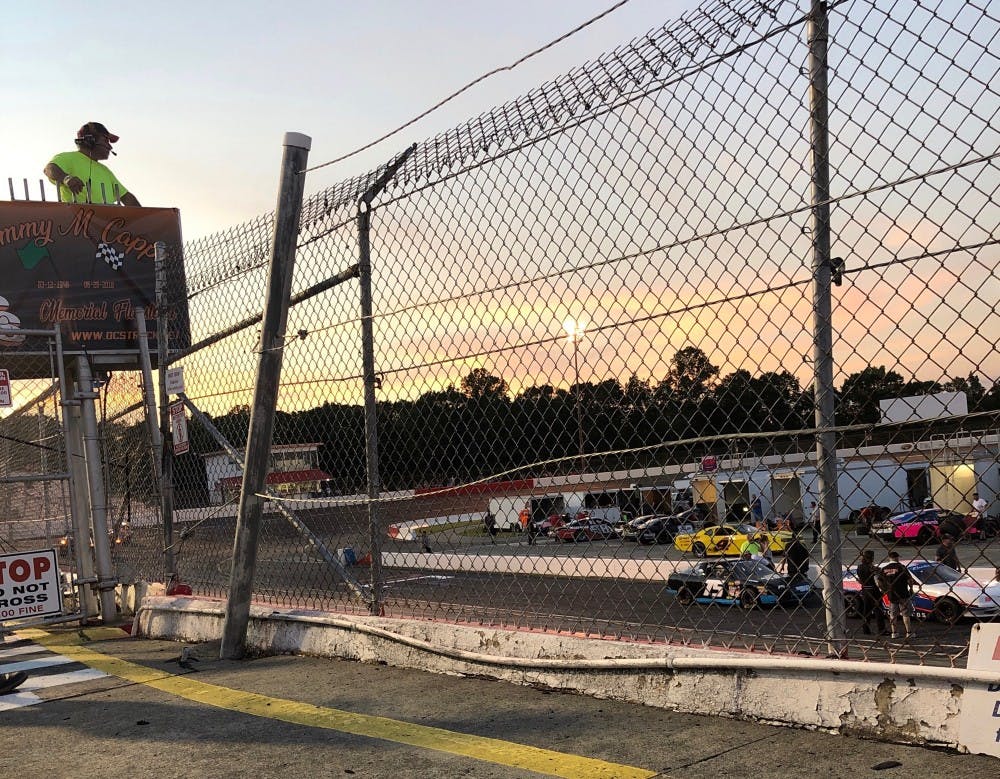In the middle of an extreme heat advisory on Saturday evening, the Orange County Speedway delivered its own form of heat on a race track in Rougemont, North Carolina advertised as “the fasted ⅜-mile race track in America.”
The Summer Firecracker Frenzy 200, held July 20, included multiple races of different divisions of cars, including late-model stocks, pure stocks, vintage and limited sportsmen and chargers. The track hosts twice-monthly races on Saturday nights from late March until October.
The majority of the crowd consisted of families with children, and many attendees at the speedway seemed to know the drivers and their teams personally. Following each race, family and friends of the drivers — usually from North Carolina or Virginia— rushed down onto the track to greet or congratulate the driver and take pictures.
There was a deep sense of community around the races, something that Mary Beth Deal, the co-manager of the track, said is integral to small, short track speedways.
“The fanbase is mostly, I would say, Oxford, Hillsborough, some Durham, Creedmoor. It’s very local,” Deal said. “I think that the racing is better. I think that people have more access to the drivers.”
Kathie Whitley, a Timberlake, North Carolina resident who has worked at the track for eight years and who describes her role as “basically anything they tell me to do,” said she loves the environment around the track.
“I work a professional job during the week, I work at a bank. So during the week I have to be very prim, proper, correct English, I have to act adult,” Whitley said. “When I’m here on the weekends if someone ticks me off I can yell at them and it’s not an issue.”
She, like Mary Beth Deal, said the atmosphere is community-based.
“It is a community. It’s completely a community. You know the drivers, you know the kids, you know if they’re sick,” Whitley said. “We have a lot of races that are compiled around people that have worked here, or people that have passed on.”



